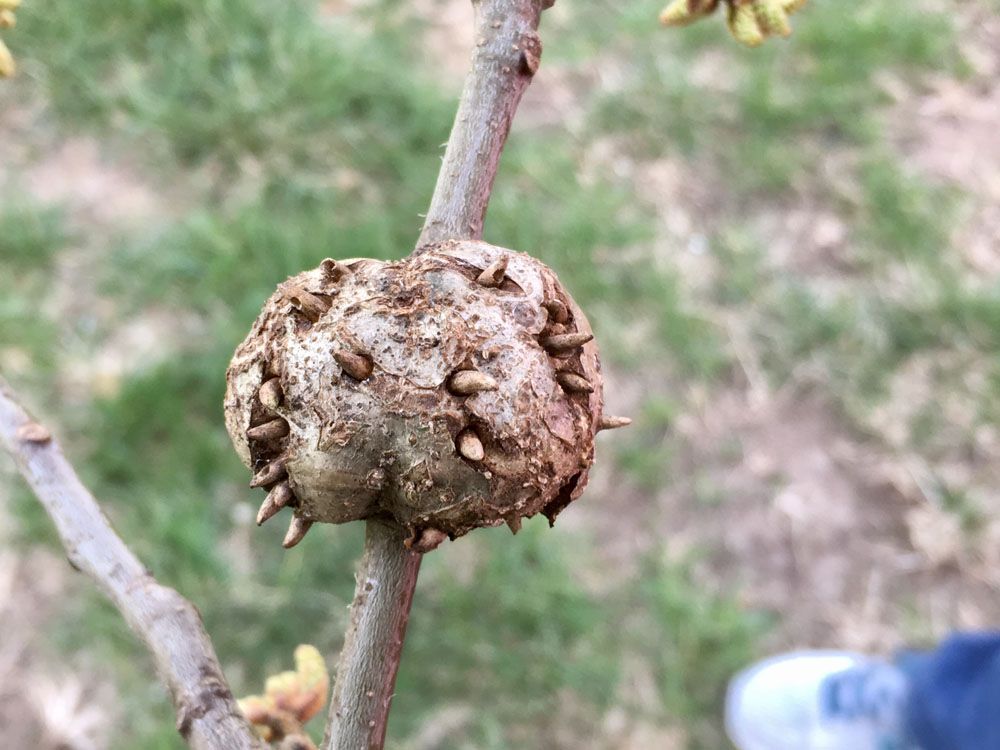
Horned Oak Gall – Callirhytis cornigera
Horned Oak Gall (Callirhytis cornigera)
Latin Name: Callirhytis cornigera
Common Name: Horned Oak Gall
Appearance:
- Callirhytis gall wasps are little (3/16 inch) brown winged insects with a flattened abdomen.
- The grubs are tiny, plump white insects with faintly sclerotized heads.
- The stomach contents of elder fares give them a black hue.
- Many gall wasps grow in woody galls on oak twigs for two or three years.
Hosts plants: various oak species, particularly pin, scrub, black, blackjack, and water oak
Territory: spread throughout Georgia north to southern Canada.
Description about Gall makers:
Gall makers appear quiet, like old buccaneers with no eye patches or shoulder parrots. They quickly and successfully seize their incentives, putting them to work doing their bidding with eye-catching results. Wasps, flies, and a few aphids and mites are gall-producing insects. The gall maker chemically hijacks a leaf bud or other location on a tree to develop a casing of plant tissue that shields and nurtures the gall maker’s growing progeny instead of conveying its booty to a secluded cove. Oak trees attract more than half of these intriguing creatures. Galls can form on leaves, bark, flowers, buds, or roots. The majority of growths, except for some twig and stem galls, have little effect on healthy trees.
Life History and Habits:
The present galls are two to three years old, and their name comes from the many cone-shaped horns that jut from the surface of the galls. Each horn contains a single larva that will grow into a parthenogenetic (eggs that do not need to be fertilized) female in the spring. These females lay their eggs on veins on the underside of newly formed oak leaves. When the eggs hatch, the larvae are surrounded by elongated leaf vein galls. In the middle to late summer, men and females emerge from the leaf galls, mate, and lay eggs on twigs. New horned oak galls grow around the larvae after the eggs hatch. The process repeats after two to three years.
